Cutting is one of the most essential skills for mastering woodworking. It doesn’t matter how advanced power tools you have in your workshop; you can’t avert using a crosscut hand saw. This manual tool helps you cut wood precisely to ensure professional results. Whether you’re a seasoned woodworker or a weekend hobbyist, learning to use a crosscut saw is crucial. So, let’s discuss how to use a crosscut saw to elevate your woodworking game.
My Best Recommendation!
- FAST & CLEAN CUTS: The hand saw has an exclusive tooth geometry for a fast clean cut
- DURABILITY: The handsaw features induction hardened teeth for a long lasting sharpness
- COMFORT: Ergonomically designed bi-material handle for comfort and control
Last update on 2025-03-28 / Affiliate links / Images from Amazon Product Advertising API
How to Cut Wood With a Handsaw – Guide
Before we go further, we must understand what a crosscut saw is.
What is a Crosscut Saw?
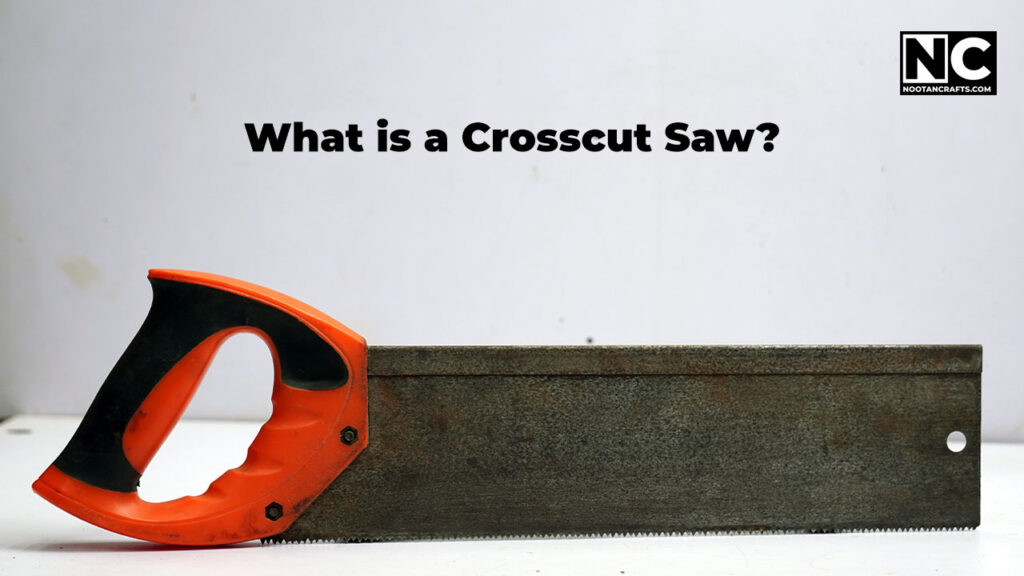
This type of handsaw is designed to cut across the wood grains. Unlike the rip saw, a crosscut saw’s teeth are shaped and sharpened to cleanly slice through the wood fibers. That’s why it’s considered the best choice for cutting planks, logs, and boards.
Types of Crosscut Saws
There are mainly two types of crosscut saws.
Manual Crosscut Saws
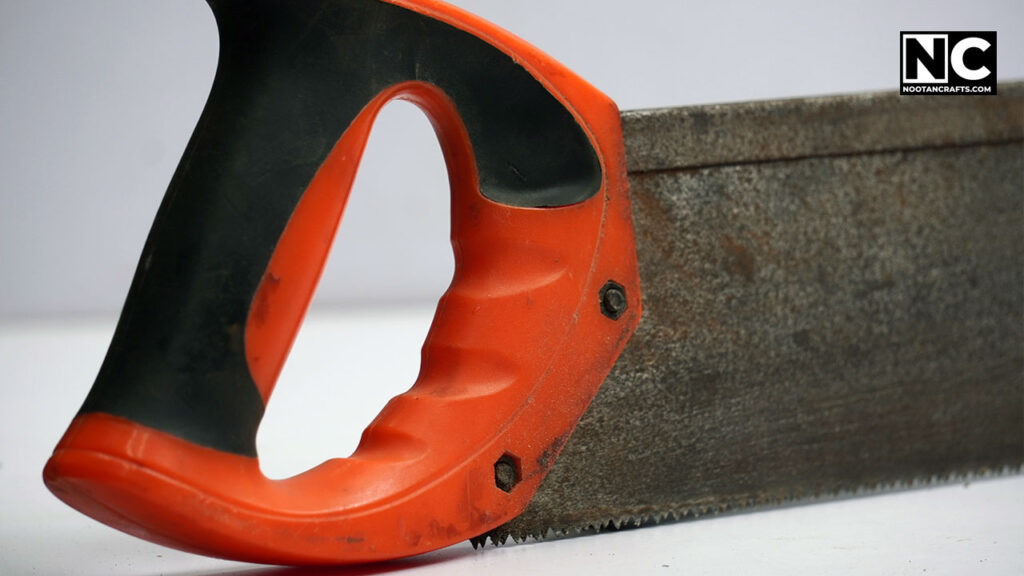
Manual crosscut saws are the traditional choice for woodworkers. They come in various sizes, from small hands to large two-man saws, used for felling trees and cutting through thick trunks. These saws are valued for their precision and control.
Power Crosscut Saws
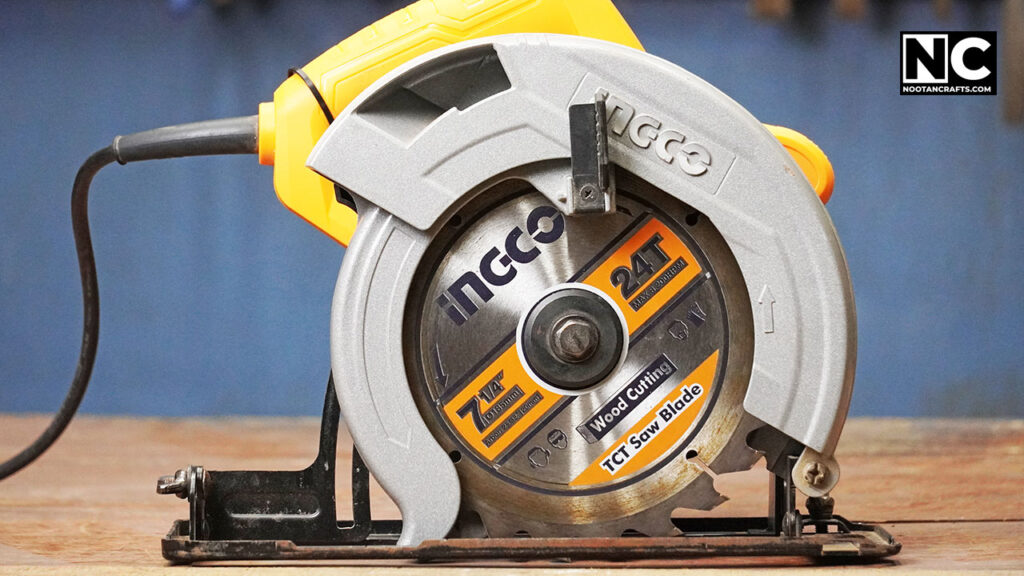
Power crosscut saws are electric versions that make cutting less physically demanding and faster. These saws are helpful when you need to cut large volumes of wood.
Safety First
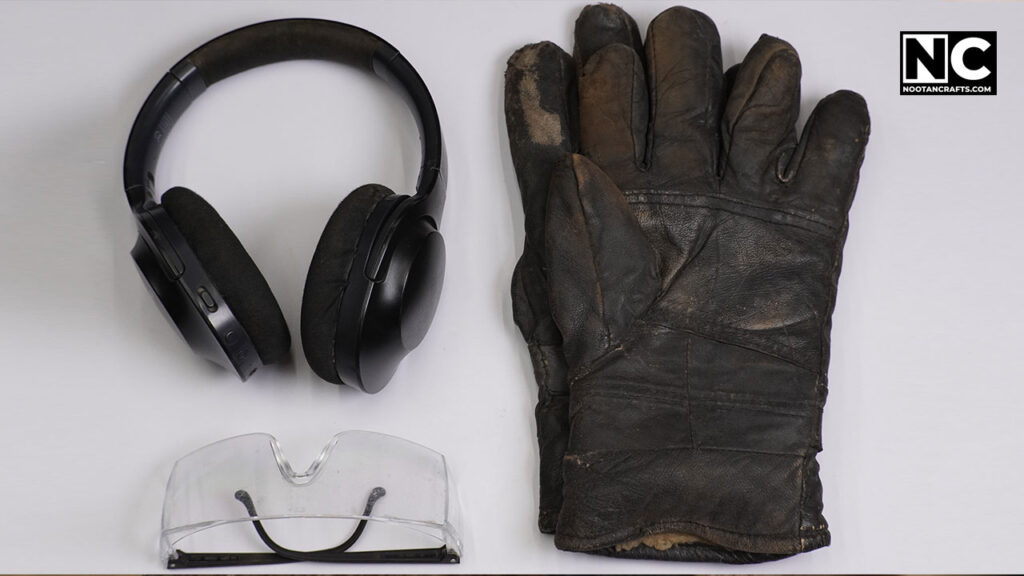
Yes, manual tools are less dangerous than their power counterparts because you have better control over the actions. But it doesn’t mean you should avert the safety precautions. Always wear safety gloves to protect your hands from splinters and cuts. Moreover, safety glasses are crucial to prevent dust and wood chips from getting into your eyes.
If you’re working with a power saw, you must consider hearing protection.
Checking the Saw Condition

Before using a saw, check its condition for better efficacy and safety. A dull saw won’t cut properly and may pose an accident risk.
What you must check before operating a crosscut hand saw:
First, check its teeth. Make sure they aren’t dull or chipped. If yes, sharpen them or even replace the blade.
Moreover, now check the handle. Sometimes with regular usage, it can loosen its place due to loose screws or bolts. Therefore, it’s necessary to tighten it because it can cause inaccurate cuts and injuries.
Setting Up Your Workpiece
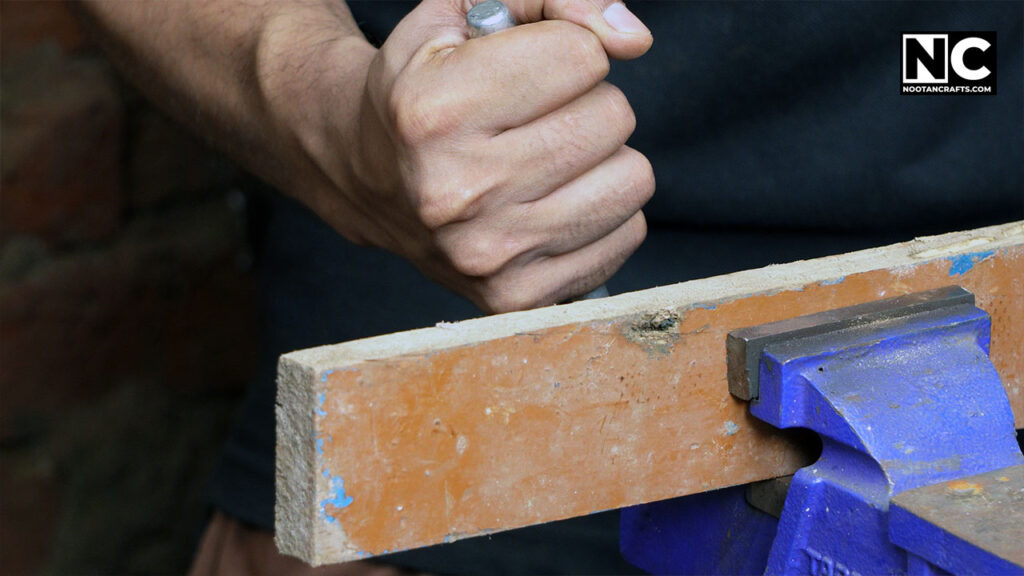
You have checked your saw; now it’s time to set up the workpiece to ensure an accurate cut.
First, secure the wood firmly on a workbench to ensure a straight and clean cut. You can also fasten your workpiece with a clamp or lay it down under another heavy board if you’re cutting a board. The idea is there shouldn’t be movement.
Next, mark the cut line with a pencil and a straightedge. It will help you keep your saw on track, which results in a straight and clean cut.
How to Use a Hand Saw – Proper Sawing Technique
Practicing is the only way to master the technique; it will make your sawing more efficient and precise. However, don’t take it too seriously; in the beginning, everyone makes mistakes, just like I did.
Here is how to cut wood with a crosscut saw.
First, you have to secure your workpiece, as mentioned above. While standing, hold the saw with your dominant hand, keeping your feet shoulder-wide for balance.
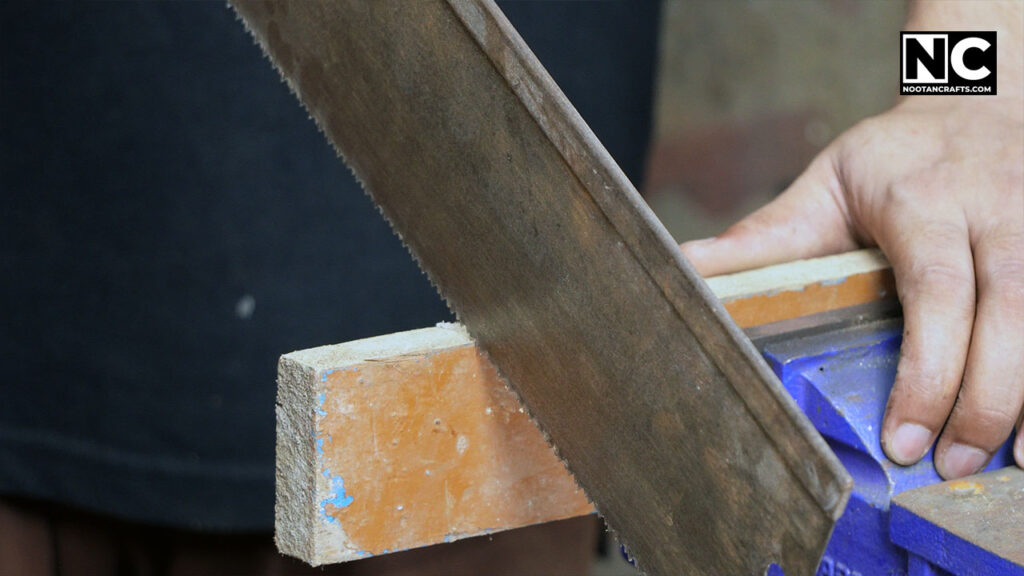
Place the saw teeth on the far edge of the wood and angle the blade slightly toward you to make the contact. Pull the saw toward you to create a notch, push it forward to deepen it, and start the cut.

Please don’t force the saw too much; let it do its work. Ensure smooth and even strokes while maintaining consistent pressure.
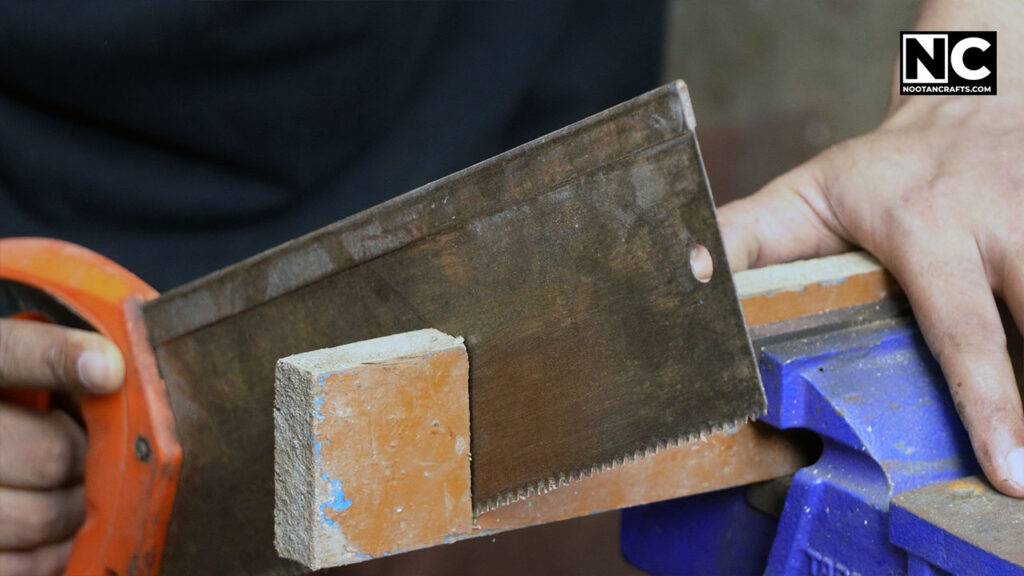
Too much pressure can bind the saw, and too little can cause it to skip; therefore, consistency is the key here.
Sharpening the Blade
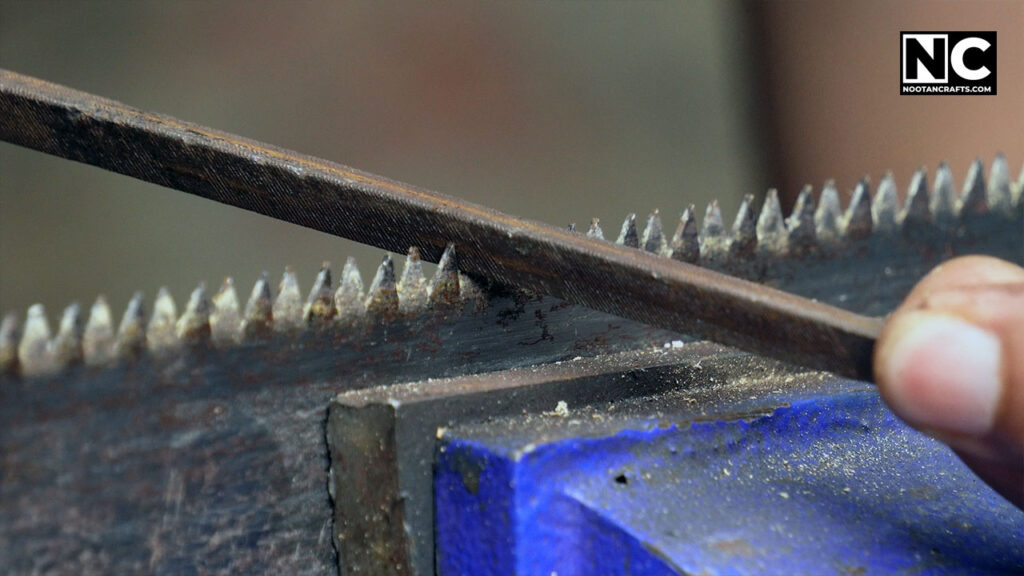
Sharpening your saw blade periodically is necessary to maintain cutting efficiency. You’ll only need a saw file and a saw set.
First, secure the saw in a vice, then sharpen each tooth individually. Now, adjust the angle of the teeth so they cut effectively.
Choosing the Right Saw
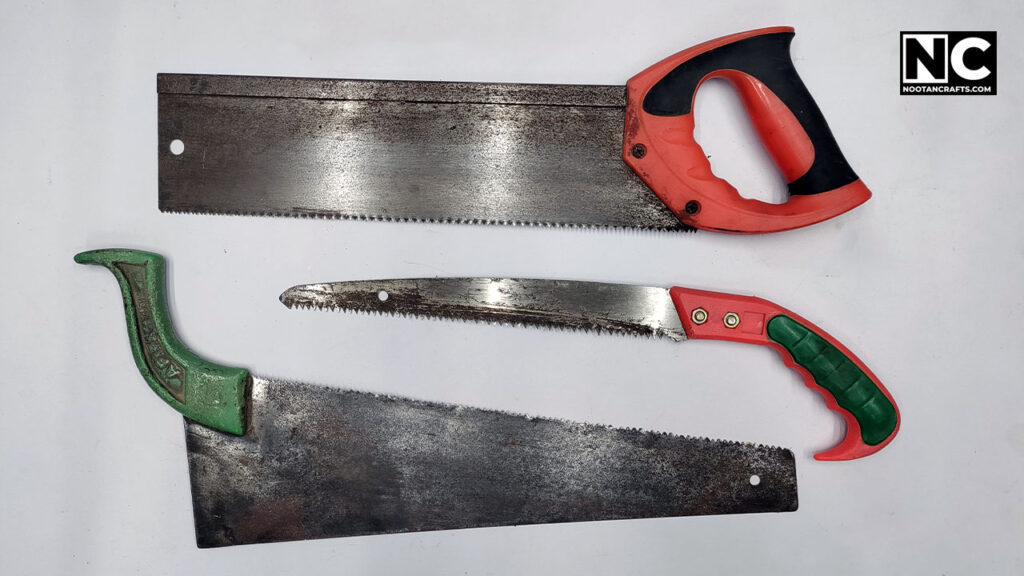
You have to select the saw according to the material and type of job. Different woods have different densities and grain patterns; therefore, you must choose the saw accordingly. Hardwoods like oak and walnut require more effort and a sharper saw. On the other hand, softer wood like pine and fir are easier to cut.
Another important factor is which types of cut you want. A coarse-teeth saw would be fine if you just want to cut the wood. Conversely, you will need a fine-toothed saw for precise and fine joints required in cabinet and box joinery.
Cleaning the Saw

After making cuts, it’s recommended to maintain the saw properly to ensure its lifespan.
After cutting, clean the sawdust and wood chips from the blade with a soft brush or cloth. Moreover, never put a saw on a flat surface because some heavy tools can bend its blade if mistakenly fell over it. Hang it or store it in your toolbox. Also, make sure the place is dry.
FAQs
Usually, you can easily cut softwoods like pine and fir with a crosscut saw. However, with a sharp blade, hardwoods like oak and maple aren’t impossible either.
It’s evident because it depends on how often you use it. Regular users may need to sharpen their saw every few weeks or months, while occasional users are ok with doing it once a year.
Why not? Crosscut saws can cut through soft plastics and thin metal sheets in a pinch. However, I recommend using the appropriate saw for each material.
If your saw binds, stop sawing and remove it carefully. Check the wood for knots or irregularities. Also, make sure your saw blade is straight and sharp.
Store your saw in a dry place and apply a light coat of oil to the blade periodically to prevent rust.
Conclusion
That’s it, guys. It is how you use a crosscut saw and maintain it properly. At the start, you might feel a bit disappointed, but it’s ok. As you practice, you can easily cut a longer board in a straight line.
If you have a circular saw or jigsaw, it feels useless to learn about using a crosscut hand saw, but trust me; it’s a valuable skill that will be useful from time to time in woodworking. Professionals often use handsaws to make precise cuts, so don’t underestimate their worth. Also, manual tools are the best when working on an expensive project, especially at the finishing stage, because it’s easier to mess it up with a power tool.
If you have any questions or feedback, please comment below. Thanks for reading; until next time, keep crafting!



What are you doing in the last image? What device is this?